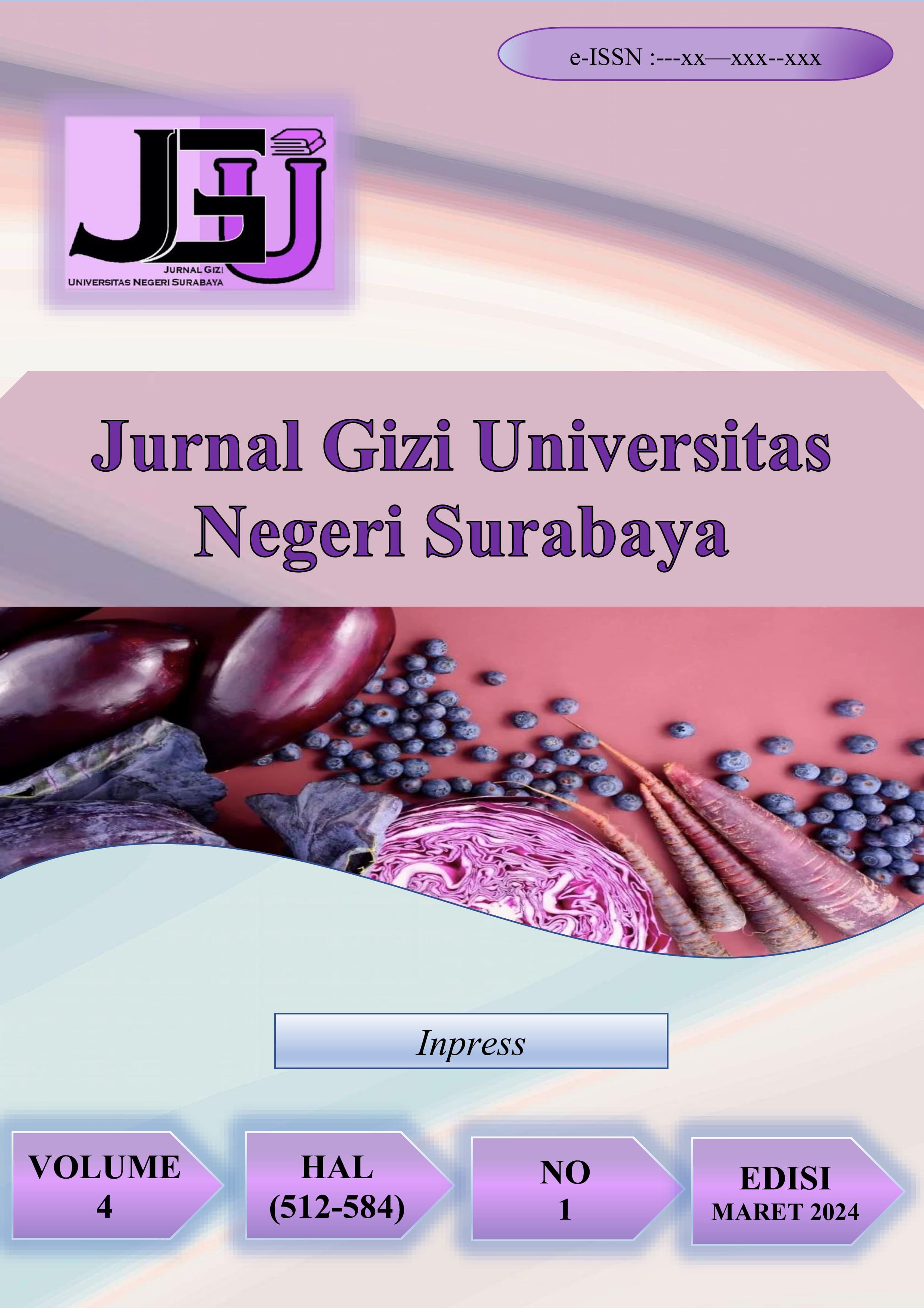Relationship between Energy-Protein Intake and Nutritional Status in Infected Toddlers Acute Respiratory Tract (ISPA) at the Mulyorejo Community Health Center, Surabaya
Keywords:
Energy Intake, Protein Intake, Nutritional Status, Acute Respiratory InfectionsAbstract
The direct causes of nutritional status are food consumption and infectious diseases. Inadequate food consumption reduces the absorption of nutrients such as energy and protein. Energy is created through the metabolism of carbohydrates, fats, and proteins which function as energy substances for metabolism. Proteins also help make antibodies in the body so that the body is not easily attacked by infectious diseases. This research aims to find out how the nutritional status of toddlers suffering from acute respiratory infections (ARI) at the Mulyorejo Community Health Center, Surabaya, correlates with their energy and protein intake. This quantitative correlational research uses a cross-sectional design. This study was conducted in the Mulyorejo Community Health Center working area with respondents of 35 toddlers who were registered at the Mulyorejo Community Health Center in February and March and their mothers or caregivers. Data was collected through filling out questionnaires with interviews. Questionnaires were used to collect respondents' identities and toddlers' energy and protein intake. By using the weight for age index, the nutritional status of toddlers is measured by weighing them directly. The research instrument has been validated by lecturers who are experienced in this field. The data analysis method is the Rank-Spearman test. The results of the Rank-Spearman analysis showed that there was a relationship between the nutritional status of ISPA toddlers and energy intake (p=0.044) and protein intake (p=0.045). The author's advice is that mothers should pay attention to what their toddlers eat so that they stay healthy.Downloads
Download data is not yet available.
Downloads
Published
2024-01-17
How to Cite
Quddus, C. (2024) “Relationship between Energy-Protein Intake and Nutritional Status in Infected Toddlers Acute Respiratory Tract (ISPA) at the Mulyorejo Community Health Center, Surabaya”, Jurnal Gizi dan Kesehatan Nusantara, 4(1), pp. 512–519. Available at: https://ejournal.unesa.ac.id/index.php/GIZIUNESA/article/view/57655 (Accessed: 22 December 2025).
Issue
Section
Artikel
 Abstract views: 286
,
Abstract views: 286
, PDF Downloads: 582
PDF Downloads: 582


